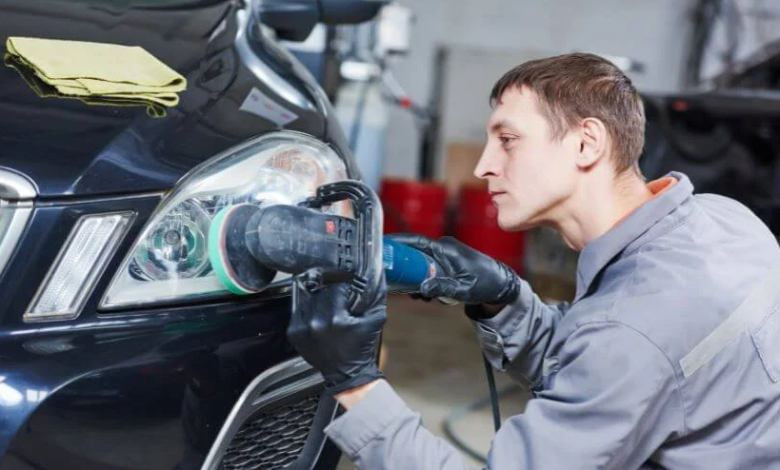How to Handle Auto Collision Repairs Efficiently

Accidents happen, and dealing with the aftermath of a car collision can be stressful. From understanding insurance claims to finding a reliable repair service, managing every step efficiently is essential to getting your vehicle back on the road quickly and safely. Using professional auto repair services like CLINE can simplify the process and ensure high-quality repairs.
In this guide, we’ll cover essential tips for handling collision repairs, choosing the right repair shop, managing insurance, and protecting your vehicle’s value.
Understanding Collision Repair
Collision repair is more than just fixing dents and scratches—it involves restoring the structural integrity, safety features, and appearance of your vehicle. After an accident, it’s crucial to address both visible and hidden damage to prevent long-term issues.
Key Components of Collision Repair
Frame straightening: Ensures the vehicle’s structure is aligned correctly.
Paint matching: Maintains the car’s original color and finish.
Mechanical repairs: Fixes engine, suspension, or drivetrain components affected in the accident.
Safety system checks: Ensures airbags, seat belts, and sensors function properly.
Professional repair centers like CLINE use advanced tools and certified technicians to handle these repairs safely and efficiently.
How to Choose the Right Collision Repair Shop
Selecting the right repair shop can make a significant difference in repair quality, time, and cost. Consider the following factors:
Certifications and experience: Look for ASE-certified technicians and shops with proven experience in collision repair.
Customer reviews: Online reviews provide insight into service quality and reliability.
Warranty on repairs: Reputable shops offer warranties on workmanship and parts.
Use of OEM parts: Original Equipment Manufacturer parts maintain your vehicle’s integrity and safety.
By choosing a trusted service like CLINE, you can ensure that repairs are done correctly the first time.
Managing Insurance Claims
Dealing with insurance claims can be complicated, but following a structured approach can help you avoid delays and misunderstandings.
Steps for Efficient Insurance Handling
Report the accident promptly: Notify your insurance company immediately.
Document the damage: Take photos and notes to provide evidence for your claim.
Get estimates: Obtain multiple repair estimates to understand potential costs.
Coordinate with the repair shop: Ensure the shop communicates directly with your insurer for smoother processing.
A professional repair service often works closely with insurance companies to streamline claims, reducing your stress and repair time.
See also: How to Choose the Right Home Elevator for Your Needs
Tips for a Smooth Repair Experience
Keep a temporary vehicle plan: Many shops provide rental cars or assistance with transportation.
Understand the repair timeline: Ask for a clear schedule and updates on progress.
Inspect completed work: Verify that repairs meet your expectations before signing off.
Maintain records: Keep all invoices and documentation for future reference or resale purposes.
Following these tips ensures a smoother, more predictable repair process.
Preventing Future Collisions
While accidents cannot always be avoided, practicing safe driving habits can reduce risks and protect your vehicle:
Follow traffic laws: Obey speed limits and traffic signals.
Stay alert: Avoid distractions such as phones or eating while driving.
Maintain your vehicle: Regular servicing and tire checks improve safety and handling.
Drive defensively: Anticipate potential hazards and keep a safe distance from other vehicle
Proactive safety measures not only protect you but also minimize future repair costs.
Benefits of Choosing a Professional Repair Service
Opting for a professional collision repair service offers several advantages:
Expertise and experience: Technicians handle complex repairs correctly.
Advanced technology: Access to modern tools and paint-matching systems.
Time efficiency: Faster repair times without sacrificing quality.
Insurance coordination: Simplified claim processing and communication.
By using a reliable service like CLINE, you ensure that your car is restored to its pre-accident condition safely and efficiently.
Maintaining Your Vehicle After Repairs
Once your car is repaired, proper maintenance can prolong the life of repairs and keep your vehicle in optimal condition:
Regular inspections: Check for alignment, paint chips, or mechanical issues.
Clean and protect the exterior: Waxing and washing prevent rust and fading.
Monitor performance: Pay attention to unusual noises, vibrations, or handling changes.
Follow manufacturer guidelines: Stick to recommended maintenance schedules.
Ongoing maintenance ensures that the investment in repairs continues to protect your vehicle and its value.
Final Thoughts
Handling auto collision repairs doesn’t have to be overwhelming. From choosing the right shop to managing insurance claims and maintaining your vehicle afterward, careful planning and professional assistance make all the difference. High-quality repair centers like CLINE provide expert service, reliable repairs, and support throughout the process, giving you peace of mind and a safe vehicle.
By taking a proactive approach to collision repair and vehicle maintenance, you can reduce stress, save money, and ensure your car stays in top condition for years to come.
